Solo and Duo
-
Solo Violin Sonata in D Minor (2024)
This one-movement sonata for solo violin is inspired by Eugène Ysaÿe and Jessie Montgomery's sonatas. It uses the full range of the instrument's capabilities to create unique textures and highlight soaring melodies. Especially notable is its use of long pedal tones on the open strings to create comfortable to execute polyphony. Performed by myself at Yale's Parker Hall.
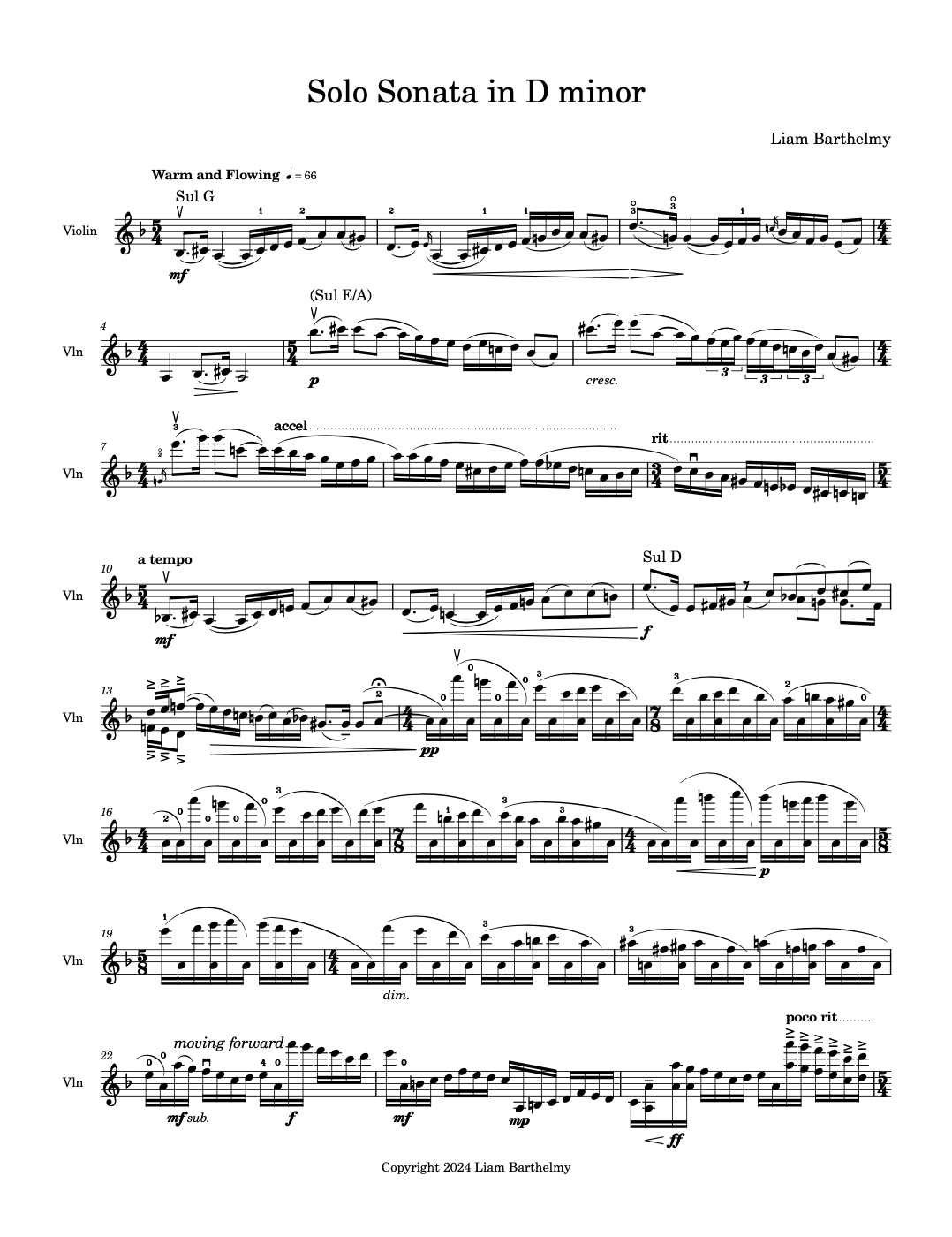
-
Three Tragic Interludes for Solo Piano (2022)
The companion piece to my Three Comedic Interludes, this piece explores the more melancholy side of the piano, with the ever flowing Gloom , longing Distance , and solemn Peace movements. Currently only Distance has been live recorded.
I. Gloom II. Distance III. Peace 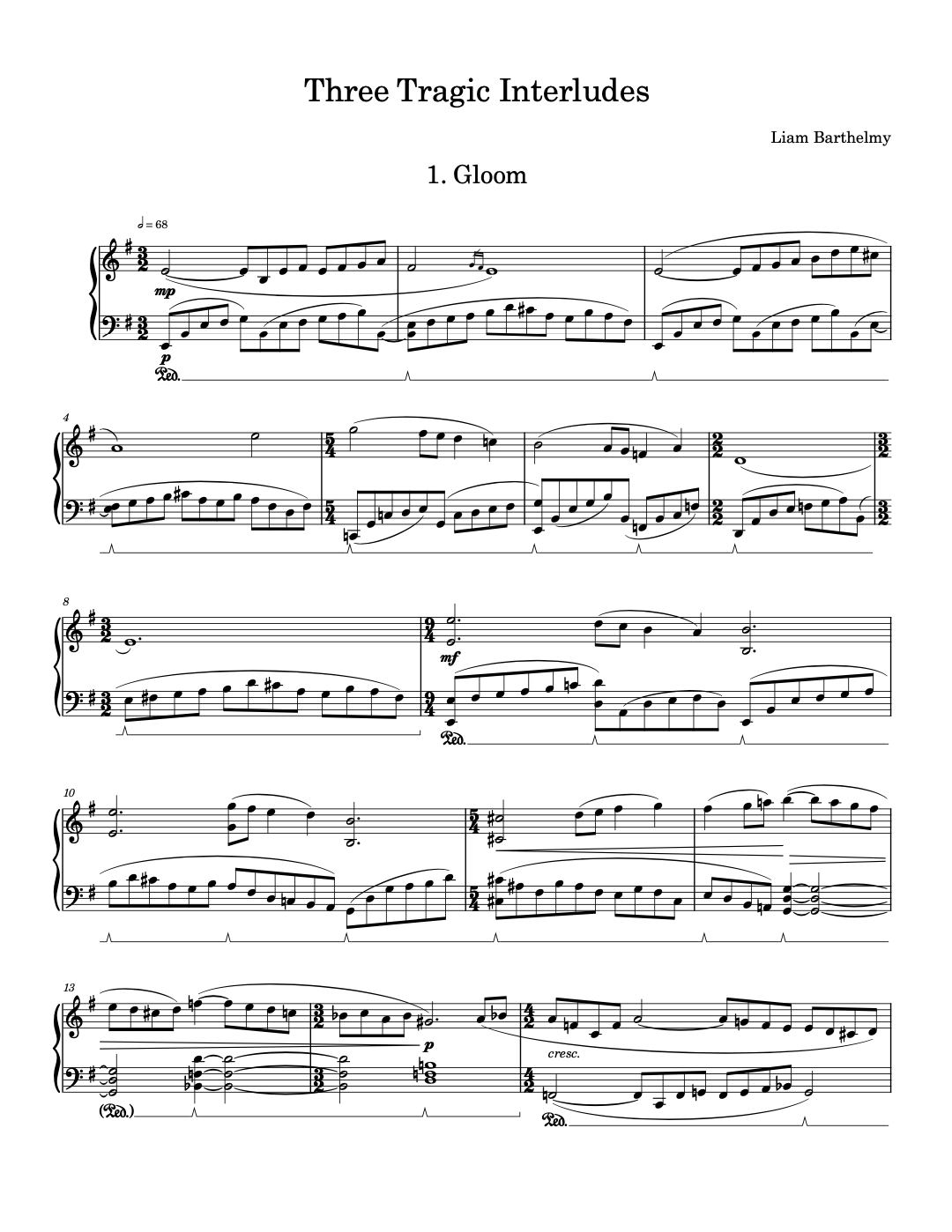
-
Three Comedic Interludes for Solo Piano (2020)
The companion piece to my Three Tragic Interludes, this piece offers several short, lively, and challenging piano pieces to enjoy. Each movement is playful in its own unique way and is sure not to overstay its welcome!
I. II. III. 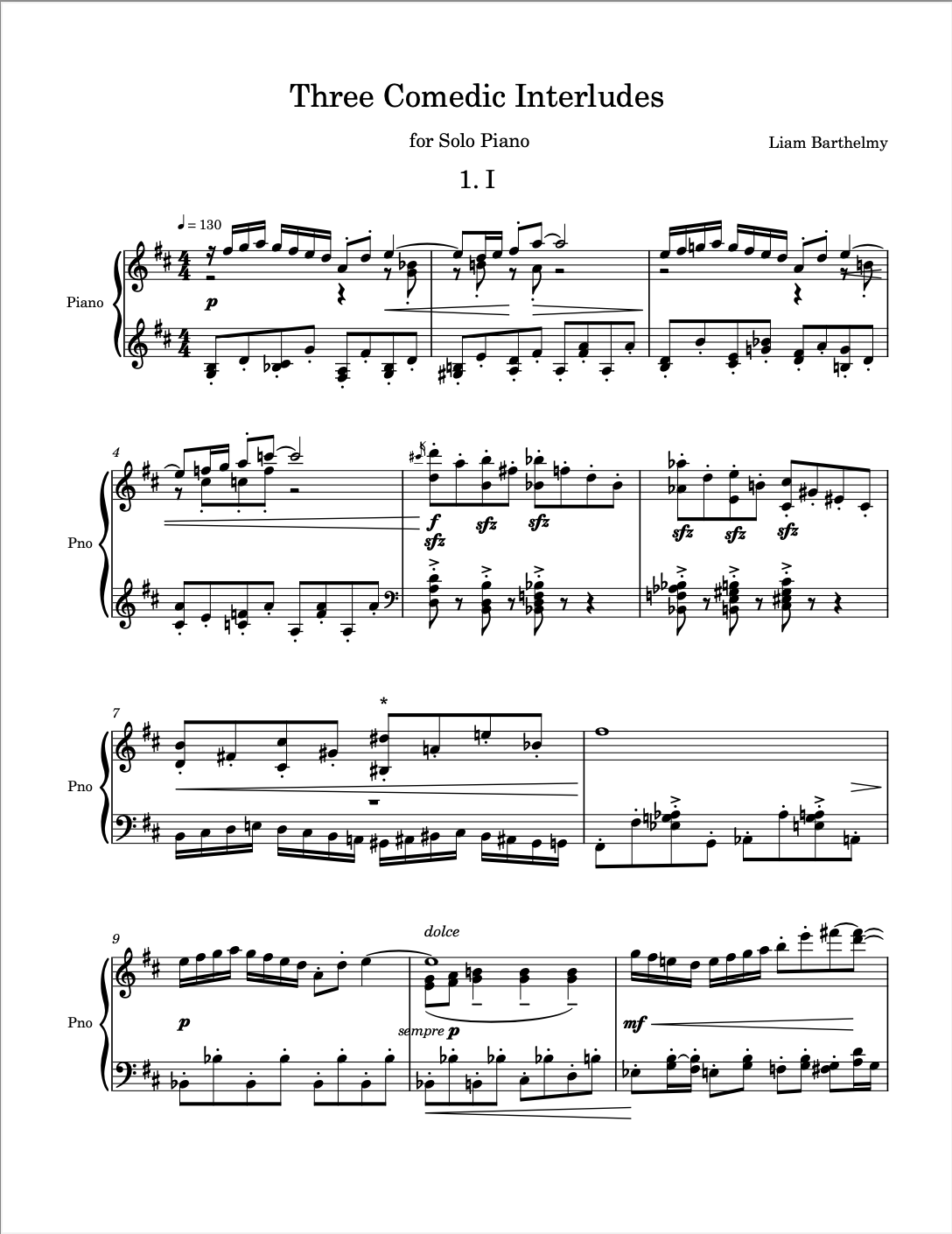
-
Suite for Clarinet and Bassoon (2020)
This suite is a more experimental piece, created to explore the capabilities of two instruments I was less familiar with. The piece opens with a free chromatic prelude featuring the two instruments in perfect rhythmic unison, continues on to an off-kilter atonal minuet, and finishes with a modal scherzo.
I. Prelude II. Minuet III. Scherzo 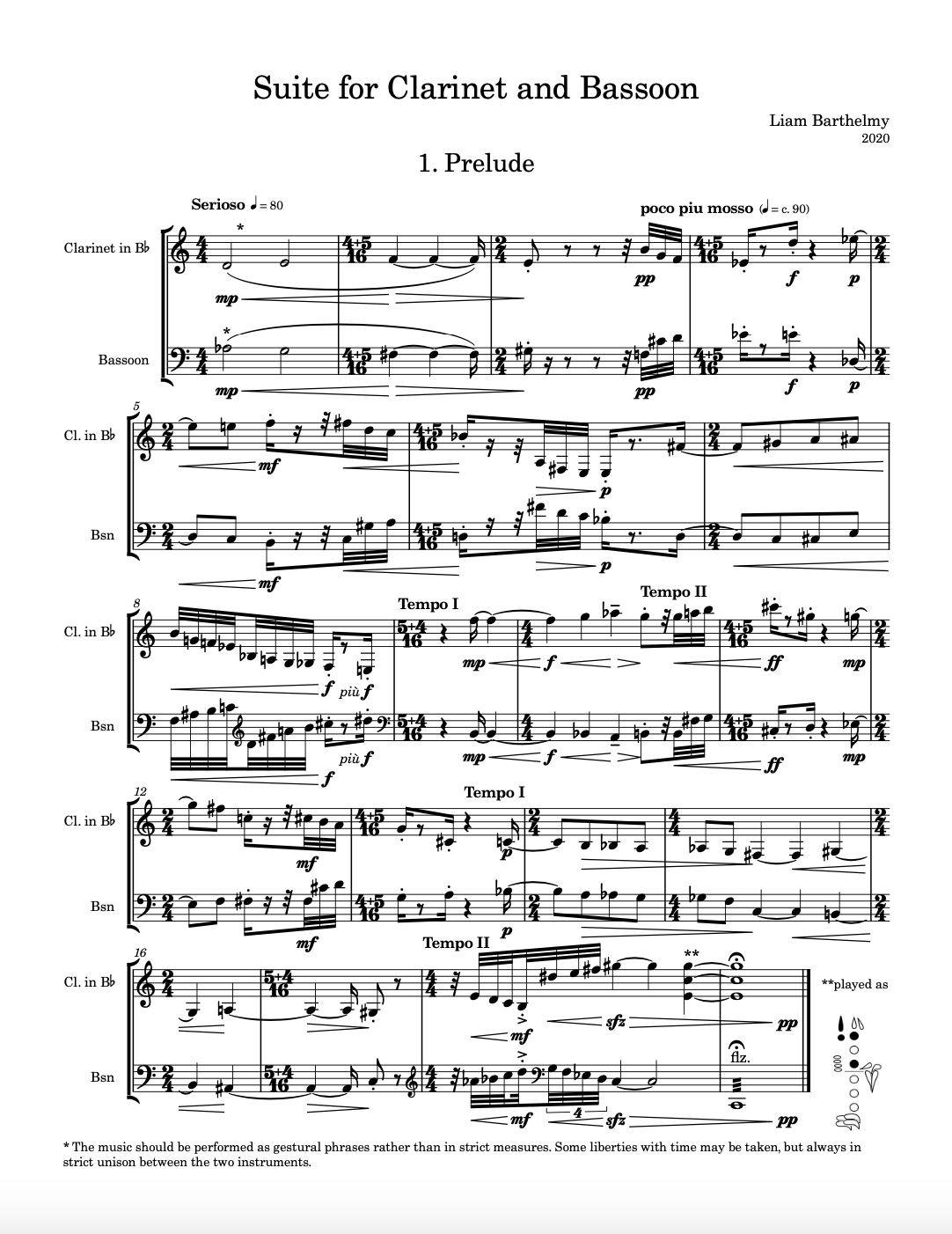
-
Two Selves (2024)
Written for a school project, this duet for two violins is entirely composed of quotes from popular classical violin music and explores themes of gender, desire, and self-control. Over the course of the piece, the first violin continually stretches the bounds of quotation and musicality, while the second violin attempts to reign them in towards a traditional performance of the quoted pieces.
Chamber and Large Ensemble
-
Arachne (2025)
This programmatic work for the unusual instrumentation of two violins, tenor saxophone, and french horn is based around the Ancient Greek myth of Arachne. Performed by the Contemporary Chamber Music Ensemble at Yale.

-
Quartet Scherzo (2023/In Progress)
This upbeat string quartet (currently with only one finished movement) can never stay in the same time signature for long! It nevertheless attempts to create a driving groove that, while often unexpected, always pushes the energy forward.
III. 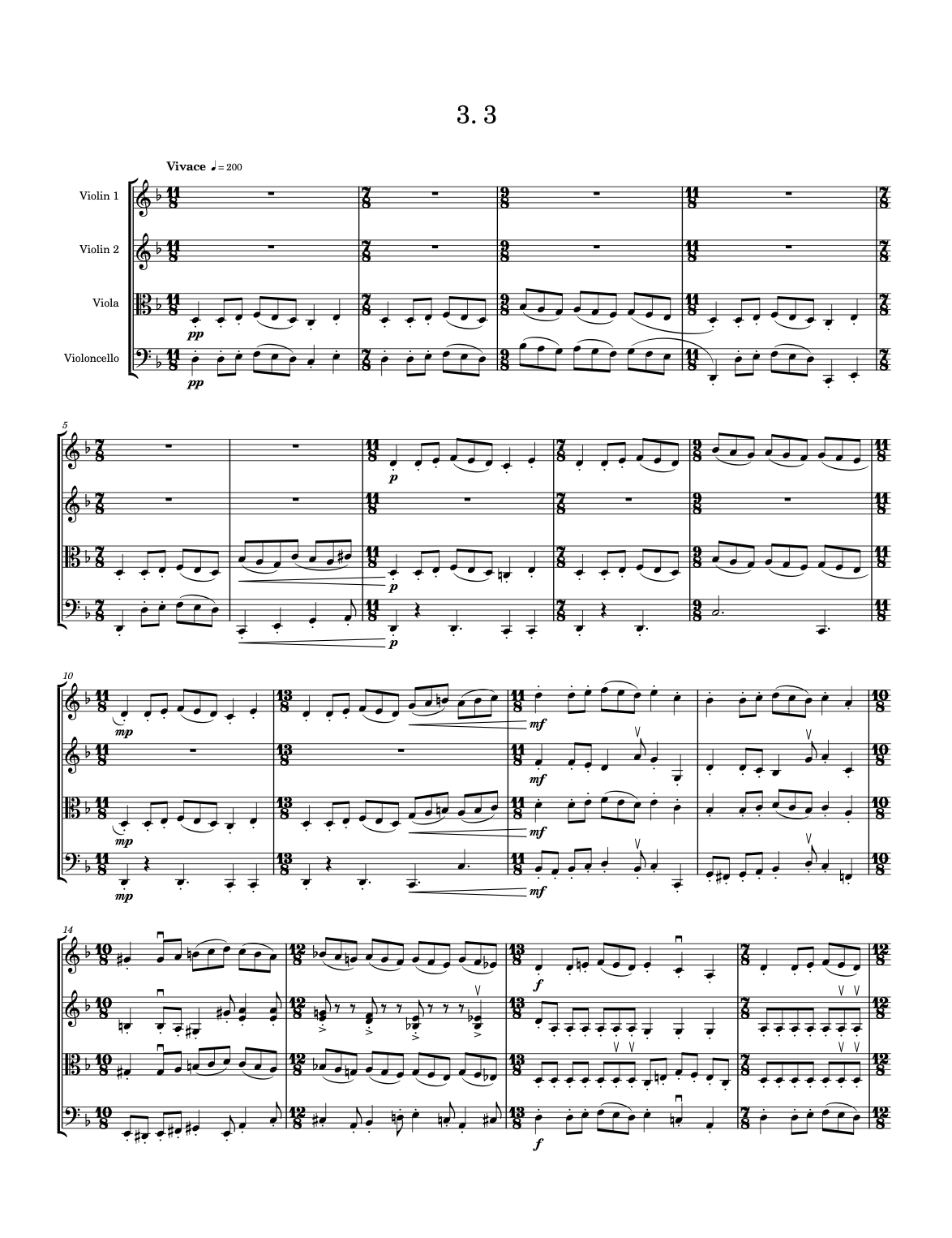
-
String Quintet (2019/2024)
This quintet, written over the course of several years, is scored for two violins, one viola, and two cellos, an uncommon instrumentation which I fell in love with after playing Schubert's Quintet in C Minor. The freeform March movement is the oldest, and the only one which has been performed live, but the Dance is one of my proudest compositions. The Finale has been effectively remade in my Quartet Scherzo's third movement which pulls heavy inspiration from this, but stands on its own as well.
I. March II. Lament III. Dance IV. Finale 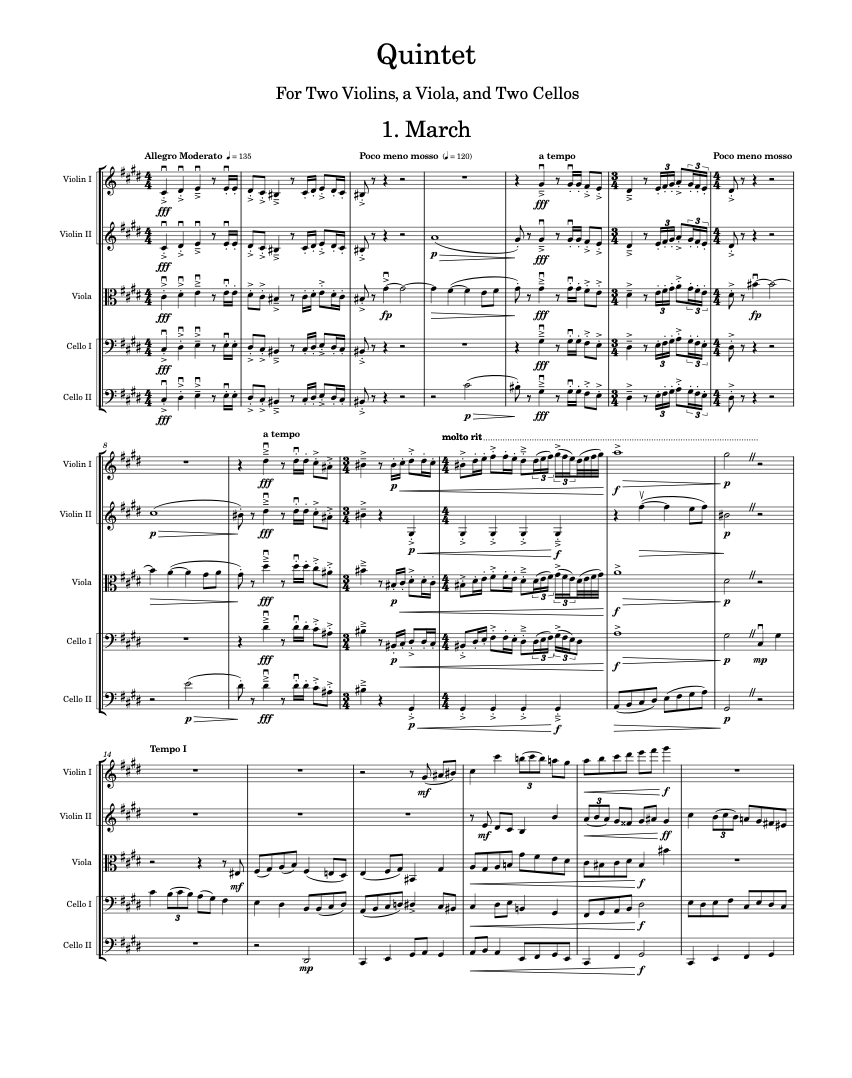
-
Scherzo for Orchestra (2020)
My first full orchestral work, this exciting standalone scherzo also features a bitonal trio section.
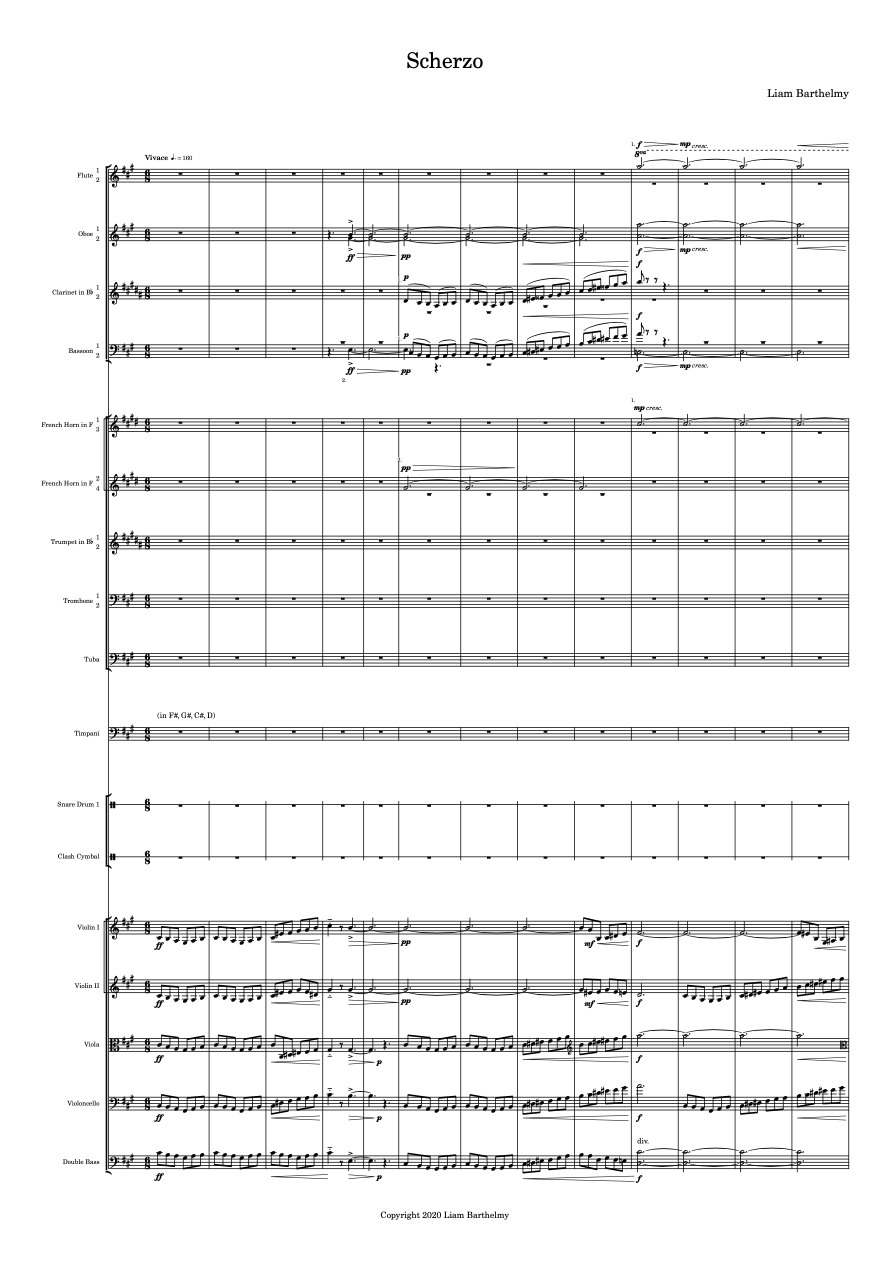
-
Piano Trio in B Flat Minor (2023)
This trio for Violin, Cello, and Piano is united around a simple arpeggiated motif which takes many forms as the piece alternates between slow and lyrical passages and faster playful parts.
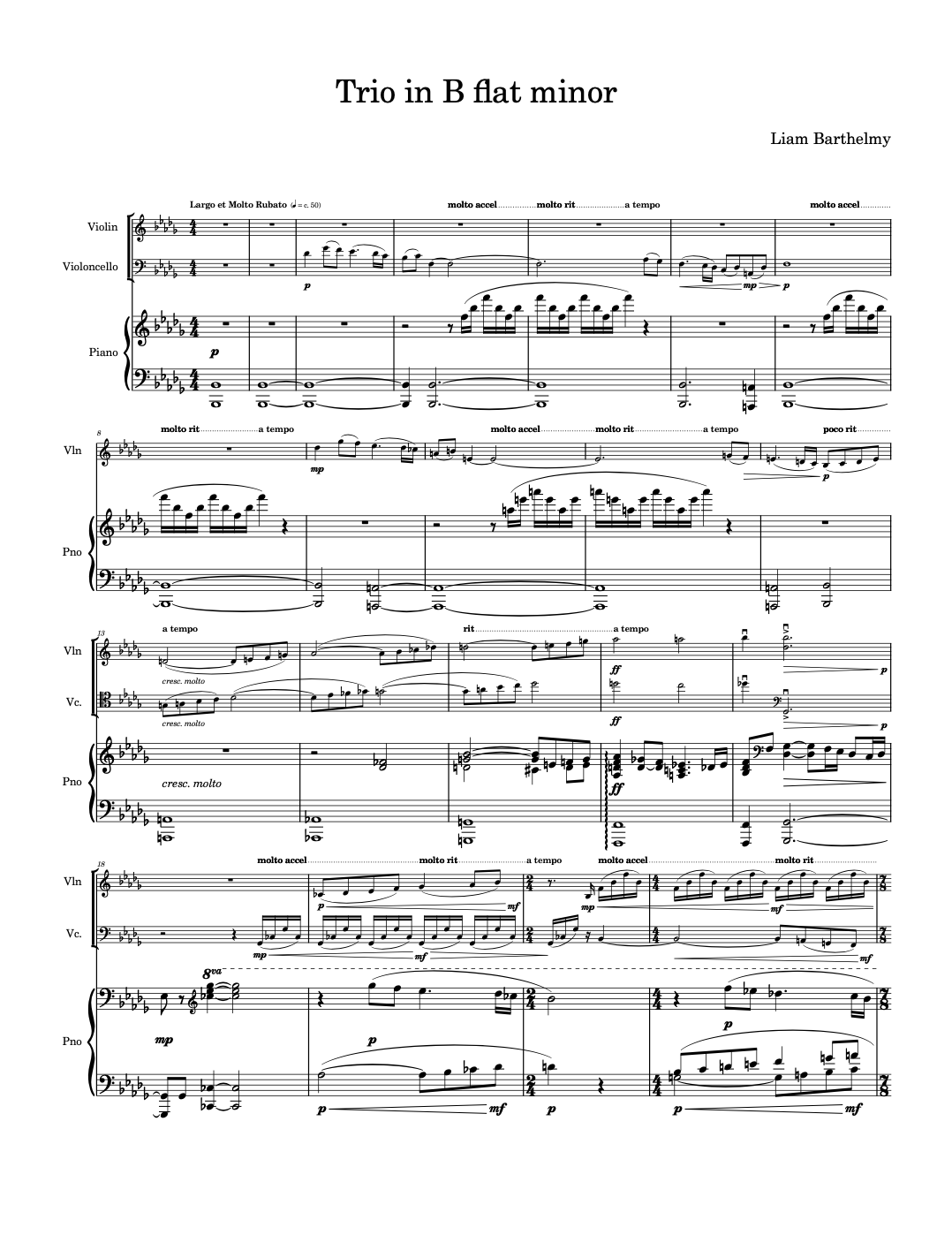
-
Conscious Storm (2022)
Written for string orchestra, this piece embodies the anxious, tumultuous thoughts that at times overwhelm my mind, other times are just an undercurrent. Tremolos and augmented arpeggios abound in this harmonically intricate work.
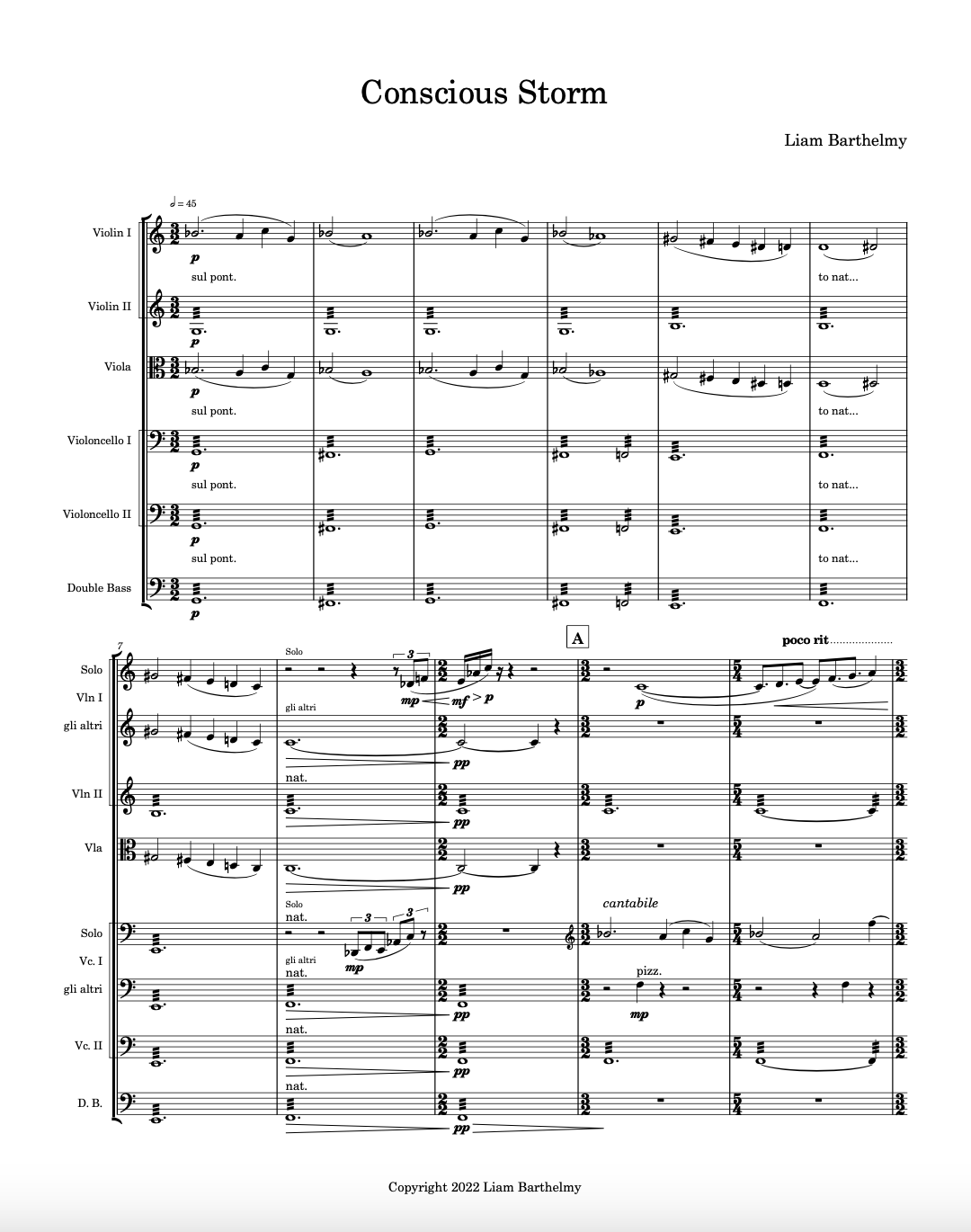
-
Tone Experiments for String Orchestra (2021)
This piece features 5 soloists, one from each string section, which drive much of the melody. It also is heavily focused on extended techniques and unusual articulations, which sadly do not come across well in the computer audio.
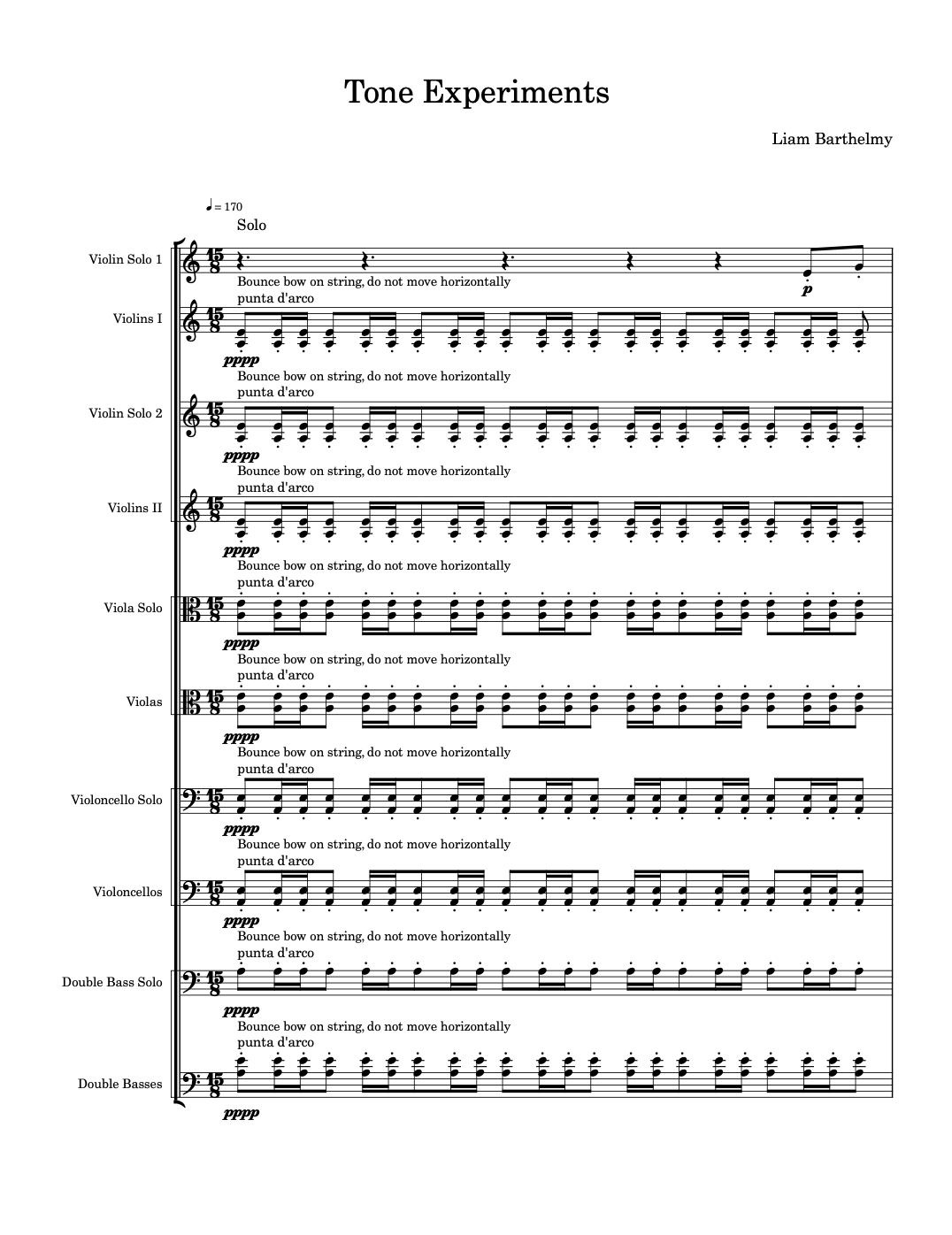
-
Violin Concerto in A (2019)
I had the amazing opportunity to perform this concerto for violin and string orchestra with my own Arlington High School honors orchestra!